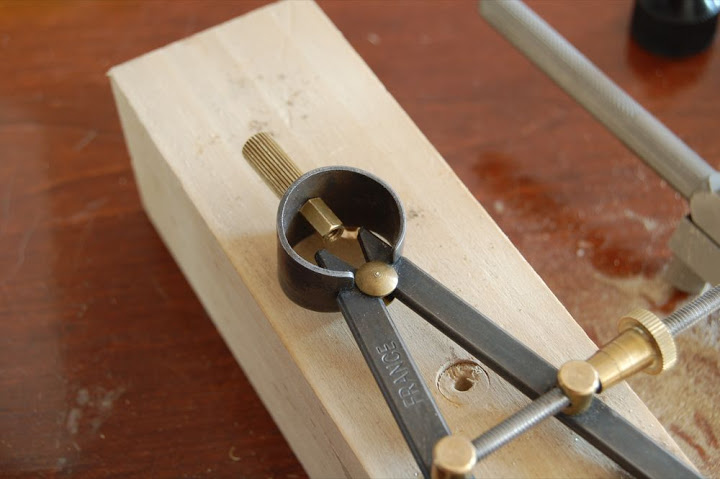We may receive a commission when you use our affiliate links. However, this does not impact our recommendations.
In my previous blog entry I showed how I threaded the stem to effectively create a bolt. The next step was to find (or make) a nut that would secure the old compass knob in its place. I was sure that somewhere in my collection I had an acorn nut that would match the 6-32 thread on the stem, but I was wrong. Since I could not find such a nut I decided to make one. I again sorted through my collection and found a long brass nut. This nut had a too small for the 6-32 thread that was needed. So, to transform it I had to re-tap the nut with a 6-32 tap. Tapping is the process of removing material in order to create a thread in a round hole; the inside of a nut is tapped while the outside of a bolt is threaded. Before you can tap a hole you need to drill it first. How wide is the hole for an intended thread size? Well, the Web is filled with information on taps and their correct pre-drilled holes. For example: if you need to make a 6-32 thread in metal you will need to pre-drill the nut with a drill # 36 (Wire Gauge Scale). For us woodworkers who are used to the fractional system of drill bits (1/16", 1/8", etc.) obtaining a separate set of drill bits that is finely incremented under the Wire Gauge system might be too expensive. Our option is to use a caliper and measure the drill bits we have and find one that closely matches the intended Wire Gauge drill size. To find out what is the exact diameter of Wire Gage drill bits please visit this site: http://en.wikipedia.org/wiki/Drill_and_tap_size_chart

I found a 7/64" drill bit which is closest to the"by the book" #36 drill and pre-drilled the hole. Next, I installed the tap in its handle, putting plenty of oil on the tap and carefully started to tap the hole. Tapping is done much like threading. Keep the tap wrench in alignment with the hole, turn the wrench in quarter turns and back off to release the shavings.
Here is a good Youtube video that explains the process.
[View:http://www.youtube.com/watch?v=veO270DcKXE:550:0]Tapping in brass is easer than tapping in steel. Once I finished tapping I cleaned any oil residues from the nut and installed it on the stem.



And here is the restored compass ready to do some circles again.
 .
.
Here are some supplies and tools we find essential in our everyday work around the shop. We may receive a commission from sales referred by our links; however, we have carefully selected these products for their usefulness and quality.









